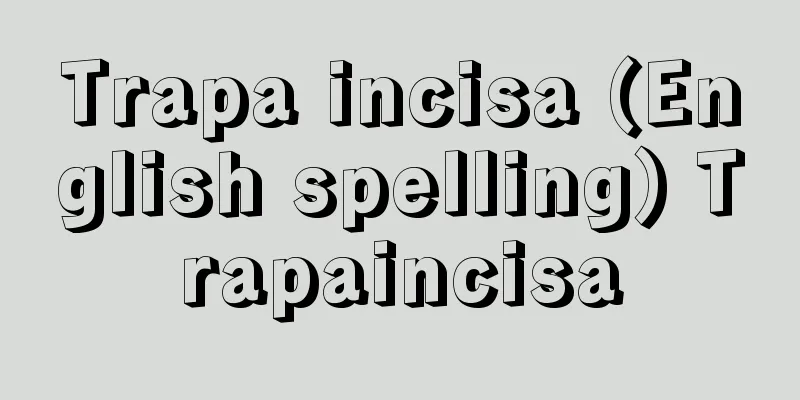Top dressing - Top dressing

|
Fertilizer applied during the growth stage of a plant is also called top dressing or top fertilizer. This term is used in contrast to basal fertilizer applied when transplanting seedlings or sowing seeds, and both supplement fertilizer nutrients during the growth stage. Top dressing is called various names depending on the growth stage of the plant when it is applied and its purpose. Tiller fertilizer and intermediate top dressing are also called stem fertilizer, and are applied with the aim of promoting tillering and improving stem and leaf growth, and nitrogen fertilizer is mainly used. Panicle fertilizer and fruit fertilizer are applied in the middle and later stages of growth to enrich the panicles and seeds, and not only nitrogen fertilizer but also phosphorus and potassium fertilizers may be applied together. In addition, the final top dressing is called stop fertilizer. For fruit trees, fertilization is sometimes called spring fertilization, summer fertilization, autumn fertilization, etc., depending on the time of application, and fertilization applied after the fruit is harvested is called reigoe (ceremonial fertilization), so the relationship between basal fertilization and top dressing is not always clear. Top dressing is applied to areas where plants are already growing, so it is done by scattering it on the surface of the soil and then covering it with soil or burying it in. The timing and frequency of top dressing, the rate of application, and the type of fertilizer used are determined based on the type of crop, soil conditions, climate, growing conditions, and the results of actual fertilization tests. [Yuki Koyama] [Reference items] | |Source: Shogakukan Encyclopedia Nipponica About Encyclopedia Nipponica Information | Legend |
|
植物の生育途中で施される肥料のことで、追い肥、掛肥(かけごえ)ともいう。苗の移植時や播種(はしゅ)時に施される基肥に対して使われることばで、いずれも生育途中での肥料養分を補うものである。追肥されるときの植物の生育期とその目的によって、いろいろな呼び名がつけられている。分げつ肥、中間追肥などは茎肥(くきごえ)ともいい、分げつを促進し茎葉の生育をよくする目的で施されるもので、おもに窒素肥料が用いられる。穂肥(ほごえ)、実肥(みごえ)などは、生育の中・後期に穂や種実の充実のために施されるもので、窒素肥料ばかりでなく、リン酸やカリ肥料などもいっしょに施されることがある。このほか、最終の追肥のことを止肥(とめごえ)とよぶ。果樹では春肥、夏肥、秋肥など、施す時期でよんだり、また果実の収穫後に施すものを礼肥(れいごえ)というなど、基肥と追肥の関係が明確でない場合もある。追肥のやり方は植物がすでに育っている場所に施すので土の表面に散布し、土をかぶせるかめり込ませるなどの表面(層)施肥である。これら追肥の時期や回数、施肥の割合、使われる肥料の種類などは、作物の種類、土の条件、気候、生育の状態や実際の施肥試験の結果に基づいて決められている。 [小山雄生] [参照項目] | |出典 小学館 日本大百科全書(ニッポニカ)日本大百科全書(ニッポニカ)について 情報 | 凡例 |
>>: Ratification - Bestätigung
Recommend
Hospital receipt - inbunzuryo
… Inbunkoku were initially assigned on an individ...
successional teeth
…these are teeth that replace milk teeth and func...
Horticultural crops - Engeisakumotsu
A plant cultivated as a horticultural plant. Sourc...
Khons
...Even though he suffered a temporary setback du...
Seleucus [I] - Seleucus
The first king of the Kingdom of Syria (reigned 30...
"Eishu Hakki"
…A record of sightseeing in natural scenery. Writ...
Sound poem
…(7) Sound poetry Poetry that leans more towards ...
"A Woman Walks the Earth Alone"
…In 1917, during World War I, she met Indian acti...
Pipeline - Pipeline (English spelling)
A facility for transporting fluids through pipes....
Welzer Ferin Company - Welzer Ferin Company
…A distinguished family of Augsburg city nobles. ...
Italics - Italics
A typeface in which the characters are inclined, a...
Unyo Incident
→ Ganghwa Island Incident Source: Shogakukan Ency...
Quail Dance
...The dancer recites the lyrics and performs a f...
Yoshikawa [Village] - Yoshikawa
A village in Kami County in the central eastern pa...
Musaeus
A 5th century Greek poet. His passionate folklore-...









